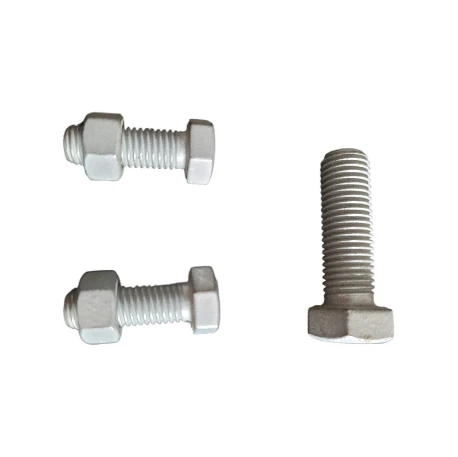

self tapping screws for 3 16 steel
Dec . 10, 2024 13:11 Back to list
self tapping screws for 3 16 steel
Understanding Self-Tapping Screws for 3/16 Steel A Comprehensive Overview
Self-tapping screws are an essential component in the world of fasteners, providing a reliable and efficient solution for joining materials together without the need for pre-drilled holes. When it comes to working with steel, particularly 3/16-inch thick steel, the importance of selecting the right type of self-tapping screw cannot be overstated. This article delves into the specifics of self-tapping screws suitable for 3/16 steel, exploring their types, features, applications, and installation considerations.
What are Self-Tapping Screws?
Self-tapping screws are specially designed screws that can create their own hole when driven into a material. This capability makes them particularly useful for fastening materials efficiently, as they eliminate the need for additional drilling operations. Self-tapping screws come in various forms, including thread-forming and thread-cutting types, each designed for specific applications and materials.
Types of Self-Tapping Screws for Steel
When dealing with 3/16-inch steel, it’s crucial to choose the right type of self-tapping screw to ensure optimal performance and strength. The main types include
1. Thread-Forming Screws These screws are used primarily with materials that can compress and accommodate the threads of the screw as it is driven in. They are excellent for softer steels and can create strong joints without the risk of material shattering.
2. Thread-Cutting Screws Specifically designed for harder materials, these screws remove material as they are driven in. This type is particularly suitable for tougher steel grades and ensures that the screw is securely anchored within the material.
3. Self-Drilling Screws Also known as Tek screws, these feature a drill-like point that allows them to penetrate through the steel while simultaneously forming the threads. They are ideal for situations where both drilling and tapping need to be done in one step, especially in thicker steel applications.
Head Types and Coatings
The head type of a self-tapping screw can significantly affect its application. Common head types include pan, flat, and hex heads. The choice depends on the tools available for installation and the aesthetic or functional requirements of the project.
self tapping screws for 3 16 steel

Additionally, different coating options, such as zinc plating or galvanization, provide increased corrosion resistance, which is essential for outdoor applications or in environments where moisture is a concern.
Applications
Self-tapping screws for 3/16 steel are utilized in a variety of industries, including
- Construction For securing structural steel components. - Manufacturing In assembly processes involving metal fabrications. - Automotive For fastening parts in vehicles where strength and reliability are paramount. - HVAC For assembling ducts and other related frameworks.
Installation Considerations
Proper installation of self-tapping screws in 3/16 steel is crucial to ensure a secure and stable joint. Key considerations include
- Pilot Holes For thread-cutting screws, pre-drilling a pilot hole may be necessary in very hard steels to ensure that the screw can effectively cut through the material.
- Torque Settings Using the correct torque settings is vital to avoid stripping the screw or damaging the material.
- Alignment Ensuring that materials are properly aligned before fastening can help maintain the structural integrity of the assembly.
Conclusion
In conclusion, self-tapping screws designed for 3/16 steel provide a versatile and reliable fastening solution across various industries. By understanding the different types, coatings, and installation techniques of these screws, professionals can ensure strong and durable connections in their projects. Whether in construction, manufacturing, or automotive applications, the right self-tapping screw can make all the difference in achieving a successful outcome.
Latest news
-
High-Strength Hot-Dip Galvanized Bolts-Hebei Longze|Corrosion Resistance&High Strength
NewsJul.30,2025
-
Hot Dip Galvanized Bolts-Hebei Longze|Corrosion Resistance&High Strength
NewsJul.30,2025
-
Hot Dip Galvanized Bolts - Hebei Longze | Corrosion Resistance, High Strength
NewsJul.30,2025
-
High-Strength Hot Dip Galvanized Bolts-Hebei Longze|Corrosion Resistance, Grade 8.8
NewsJul.30,2025
-
Hot Dip Galvanized Bolts-Hebei Longze|Corrosion Resistance,High Strength
NewsJul.29,2025
-
High-Strength Hot Dip Galvanized Bolts - Hebei Longze Metal Products Manufacturing Co., Ltd.|corrosion resistance&high strength
NewsJul.29,2025

